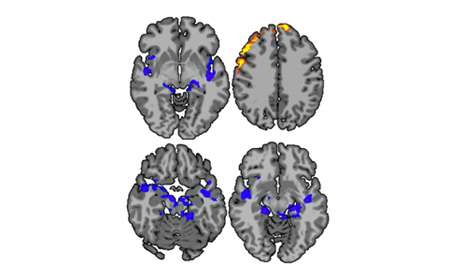Real-time brain feedback can help people overcome anxiety

(Medical Xpress)—People provided with a real-time readout of activity in specific regions of their brains can learn to control that activity and lessen their anxiety, according to new findings published online in the journal Translational Psychiatry.
Using functional magnetic resonance imaging (fMRI), Yale researchers displayed the activity of the orbitofrontal cortex, a brain region just above the eyes, to subjects while they lay in a brain scanner.
Through a process of trial and error, these subjects were gradually able to learn to control their brain activity. This led both to changes in brain connectivity and to increased control over anxiety. These changes were still present several days after the training.
Extreme anxiety associated with worries about dirt and germs is characteristic of many patients with obsessive-compulsive disorder (OCD). Hyperactivity in the orbitofrontal cortex is seen in many of these individuals.
fMRI-driven neurofeedback has been used before in a few contexts, but it has never been applied to the treatment of anxiety. The findings raise the possibility that real-time fMRI feedback may provide a novel and effective form of treatment for OCD.
Read the study at Translational Psychiatry.


















